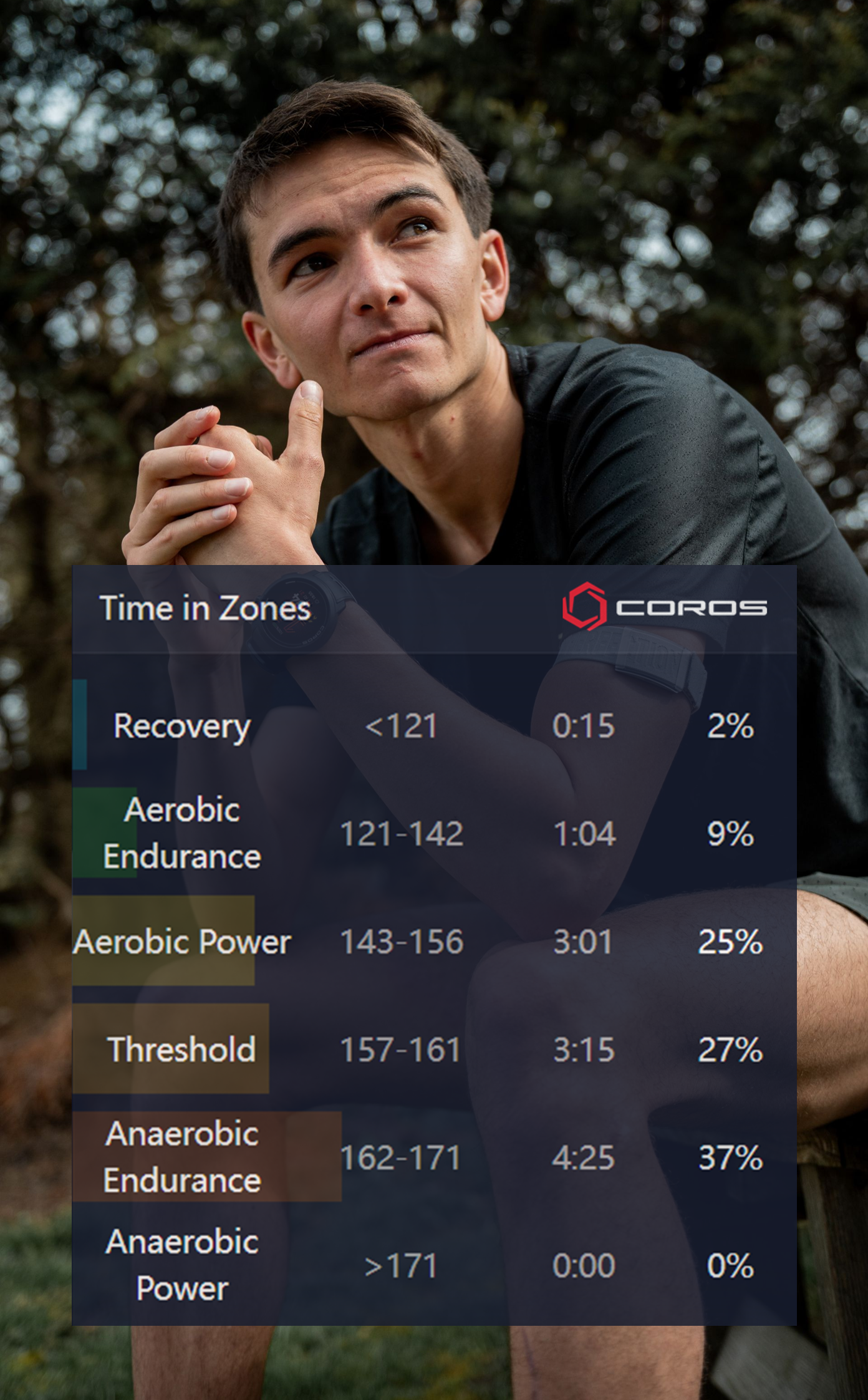Training with heart rate is one of the most effective ways to understand and control your effort. Whether you're just getting started with structured training or you're looking to break through a performance plateau, heart rate data gives you a real-time window into how hard your body is working.
COROS makes heart rate training accessible and powerful for everyone. Here's how to make the most of it, whether you're new to heart rate training or an experienced runner dialing in your intensity.
For Beginners: Why Train with Heart Rate?
If you're new to structured training, heart rate zones can feel overwhelming. But here's the simple truth: your heart tells the story of your effort. COROS watches automatically create personalized heart rate zones based on your fitness level. These range from Recovery (Zone 1) to Anaerobic Power (Zone 6).
One of the most common mistakes runners make is running too hard too often. It feels productive, but it often leads to fatigue, plateau, or injury. Even elite runners spend most of their weekly volume in Recovery or Aerobic Endurance (Zones 1–2). It’s not about running hard all the time—it’s about running with purpose.
That said, running too easy all the time can also limit your progress. The key is balance. Easy runs build your aerobic foundation, while one or two higher-intensity sessions per week drive improvement. These harder workouts vary depending on your race goals:
- Marathon training often focuses on sustained efforts in Aerobic Power (Zone 3).
- 10K and Half Marathon plans mix in work across Aerobic Power and Threshold (Zones 3-4).
- 5K and Mile training includes fast intervals that reach Threshold and Anaerobic Endurance (Zones 4-5).
By understanding what each run is meant to do, you’ll train smarter and stay healthier.
New to easy runs? Check out our guide on Zone 2 Easy Runs to understand why most of your training should feel… well, easy.
Setting Up for Success

For the most accurate readings, pair your COROS watch with the COROS Heart Rate Monitor, an upper-arm strap designed for comfort and precision—even during interval sessions.
Prefer to use your watch only? Be sure to wear it snugly, about two inches above the wrist bone. This helps reduce signal noise, especially during rapid changes in pace.
Learn more about how COROS defines Heart Rate Zones and how to adjust them if needed.
For Experienced Runners: Heart Rate Meets Strategy
Already familiar with heart rate zones? COROS helps you train more intelligently by connecting heart rate with key performance metrics:
- Efficiency Score: Are you getting faster at the same heart rate? COROS tracks this to show how your fitness is evolving.
- Training Load and Intensity Trend: Know when to push and when to recover. A healthy balance between short-term and long-term stress helps you avoid overtraining while improving performance.
- Threshold HR: Based on your unique fitness data, EvoLab defines your lactate threshold—the point where effort begins to become unsustainable. Training just below and above this point is known to improve fitness, so knowing your threshold is crucial. Your threshold HR isn't expected to change much or at all, but the pace you can run at this HR can get faster over time, showing improved running fitness.
Optimize Recovery with RHR and HRV
The insights continue even after the run finishes. COROS offers daily Resting Heart Rate (RHR) and Overnight Heart Rate Variability (HRV) to help you monitor your recovery.
- A rising RHR can signal fatigue or illness.
- Lower-than-normal HRV can indicate your body is under stress.
Both metrics update automatically in your EvoLab summary when you wear your watch to sleep. Over time, these trends help you understand how your lifestyle and training impact recovery. RHR and HRV trends can help you decide when to push and when to ease off. Just because your plan says “intervals” doesn’t mean your body is ready. These metrics help you train smart, not blindly.
Structured Workouts and Run Analysis

COROS allows you to create structured workouts by heart rate zone—ideal for planning intervals, tempos, or recovery runs. Once completed, we calculate Effort Accuracy, a score that shows how closely you followed the workout plan in both duration and intensity.
After each run, use Heart Rate Zone Distribution and Training Load insights to assess:
- Did I hit the right zones for today’s goal?
- Am I balancing easy, moderate, and hard training throughout the week
- Is my cumulative training load in line with my fitness?
By reviewing your data after each run, you can fine-tune your upcoming sessions, avoid overtraining, and ensure your training aligns with your goals.
Final Thought: Train Based on What Your Body Tells You
Heart rate training isn't about hitting a number - it's about listening to your body to manage intensity, avoid burnout, and stay consistent. With COROS, heart rate becomes more than a stat. It's a guide to smarter training, faster recovery, and better results.

/filters:quality(90)/fit-in/970x750/coros-web-faq/upload/images/226d03556f8aa84b54a9effbeddf4565.png)





